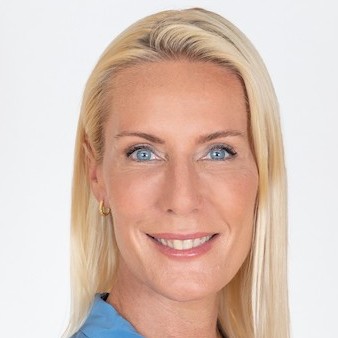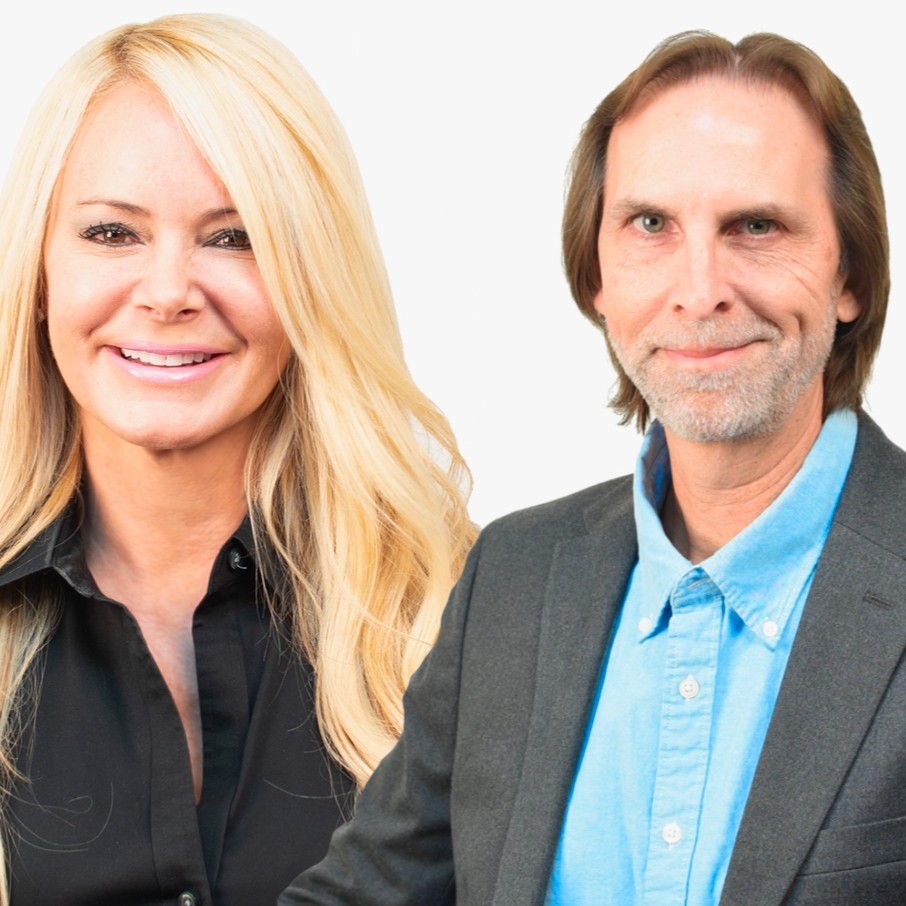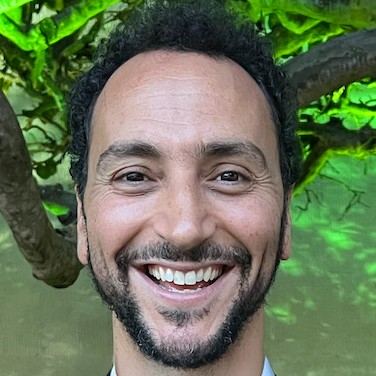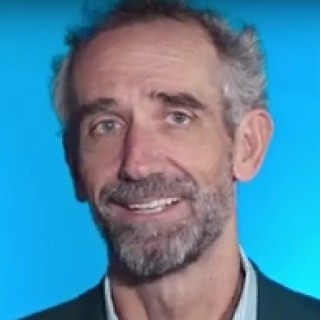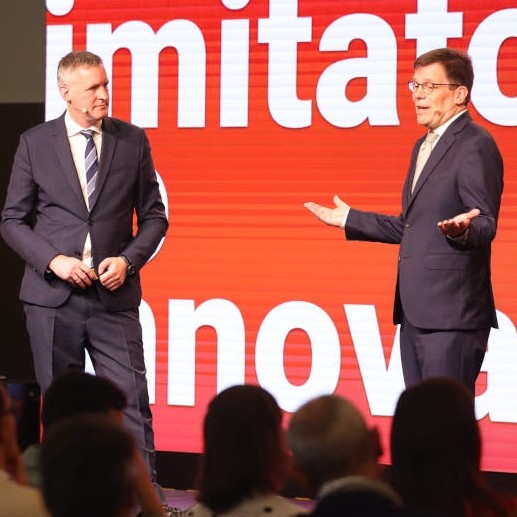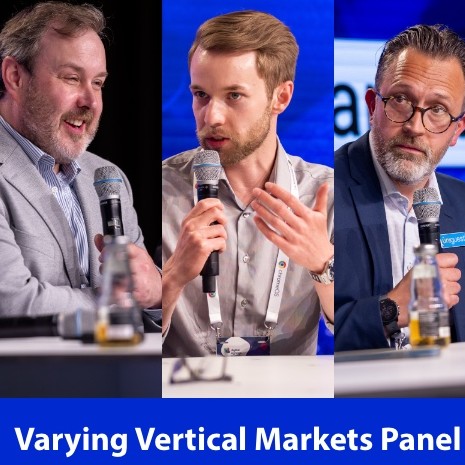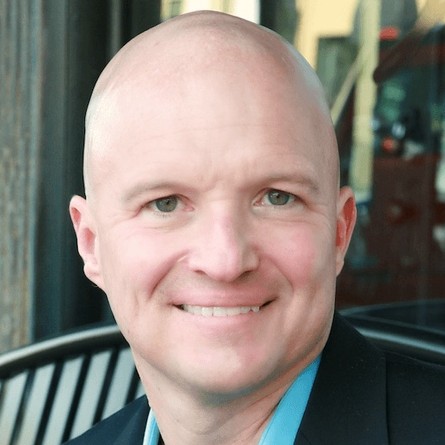Anna Bager, OAAA
Description
The 16:9 PODCAST IS SPONSORED BY SCREENFEED – DIGITAL SIGNAGE CONTENT
The Outdoor Advertising Association of America represents and guides the interests and activities of some 850 member organizations across the US, including the biggest media companies, brands that do a lot of outdoor, agencies, ad-tech providers, and suppliers.
That's billboard, of course, but also the other formats for advertising, from transit shelters to place-based media networks on TVs in venues like bars, clinics and workout studios
The OAAA has been around since 1891, and these days is seeing rapid growth for the medium, especially on the digital side. If they're not already doing digital, most OAAA members are going down that path and also adopting technologies like AI.
I had a really good chat, about a bunch of things, with Anna Bager - the association's President and CEO.
We get into the state of the medium, which is particularly busy because of ALL the money flowing into political advertising. We also touch on issues like a need to simplify the planning, buying and distribution ecosystem, and the OAAA's perspective and activity around something that's huge in other regions like Europe - sustainability.
Subscribe from wherever you pick up new podcasts.
TRANSCRIPT
Anna, thank you for joining me. This is going to be a simple question to start out with, but can you tell me what the OAAA does and why it exists?
Anna Bager: Absolutely, so we are the Out of Home Advertising Association of America and we are what I would call a classic trade association. We focus on two things. We want to protect the industry and we want to grow the industry. So on the protection front, we have a pretty big government affairs unit. We do state and federal lobbying on things that really matter to the industry, such as the First Amendment, anything real estate, infrastructure, and the Highway Beautification Act, which controls the number of signs or at least roadside that you can have in the US and privacy is another area that we're increasingly interested in privacy and data regulation. Keeping an eye on what's happening, making sure that there are no laws that don't work well for the industry that is being passed or hopefully not, and, also looking for opportunities, where we can, as an industry where we can maybe benefit from some of the legislation and more things that are happening in DC or state level that can work well for the industry.
So that's one part lobbying and government affairs and a lot of legal operations, and then the other part is the growth side, and for that, we do research on behalf of the industry. We do a lot of promotion of the industry at our own events or other events. We're out there talking to advertisers and brands about why they should be. Spending more money, and investing more out-of-home, and then we create guidelines, standards, and frameworks that help the industry operate better and make it easier to buy and sell. I think that sums it up.
It’s a member organization?
Anna Bager: It's a member organization. We are the largest out-of-home association, I think, in the world, actually. We have probably close to 800 members and pretty much everyone who is in the out-of-home industry in the US and some other international members.
So this would be Lamar all the way down to an almost hyper-local kind of media owner?
Anna Bager: It would definitely be but it could also be a gas station TV. It could be a cinema. It could be Airports and transit, so we cover it all. It's not just the roadside, it's all the different formats.
Is there a cutoff? I'm curious about some of what they call faster consumer TV networks like Atmosphere and Loop and so on that are in bars and it's a streaming app.
Anna Bager: They are members too.
Okay, so where would you cut it off?
Anna Bager: I don't cut it off. I think we welcome anyone as a member if they're in out-of-home advertising, which is, we're called out-of-home, but if I had been the one to take a pick, I probably would have called it location-based media because that's really what we are, right? Wherever there is signage or any type of ad that's there because of the location, and the context that is there it seems to be a good place to reach consumers or business people because they're there at that time and they might be receptive to a message.
So anyone who's in that could be retail media networks. It could be retail organizations, could be place-based. It could be a point of care, like doctor's offices, but we typically don't have those companies as members, but they could be. Also, one thing that I think is common for most of our members is that we're one too many advertisers. We're not targeting individuals so it can be seen by many. So anyone who's doing that could be a member of the OAAA.
You mentioned retail media networks. I was going to ask about that later, let's get into it. You mentioned it. I'm curious because of the rise of that and how you're starting to see more and more activity around the in-store piece of it and not just the online and mobile parts. Are they different budgets?
Anna Bager: I think so. I think it depends. It's certainly a growth opportunity for the industry. Retail in general is taking place in a store, a lot of it online, but you have to get people there or you have to get them interested. You also may want to amplify a message before they're in the store, you want to serve them an offer and that's where we can come in.
The retail media networks themselves, buy a lot of media also on behalf of their advertisers. So it could be a Coca-Cola, right? They buy media for them. I think that out-of-home is a natural part of media that you should buy to create the most bang for the buck for a company, it's not just in the stores, it's everything around and creates an audience extension, et cetera. So there might be other budgets. It's definitely a different type of buyer, but I think we're uniquely positioned and I think we play an important role in the world of retail media, reaching consumers on the go or even at home.
I think what these networks have can be very useful, especially now that out-of-home has become more digital and you can increasingly use data and target in a very different way and also change out messages really fast. These guys have first-party data, from loyalty programs or consumers basically leaning in and allowing them to use their data and the ability to then use that data on the knowledge of where consumers might be or on the go, or, the interest they might have and use contextual and location-based advertising makes it just so much better. I think it's a great match. The ability to use the data to do that.
So what's the state of being out-of-home at this point? In your keynote, which I think was for your annual conference, you talked about double-digit growth.
Anna Bager: Yeah, I mean out-of-home has had an interesting journey since the pandemic. Before that, we were growing very steadily every year, then obviously we had a dip in the pandemic and then we had an amazing year in 2022, where I think out-of-home were faster than any other ad media. And since then, it's been steadily going up. This year is particularly interesting. There's a lot going on. We have an election that's coming up that's driving a lot of ad dollars and also not just ad dollars into out-of-home, but also into other media where other brands then look for a positioning somewhere else. So there's just a lot of movement in the market right now.
It’s an economy that hopefully will start growing again. So it's been a good year. We keep growing and I think next year is going to be hopefully even better than this year.
And does digital now represent the overall kind of installed base and also a percentage of overall revenue?
Anna Bager: Digital is interesting. So I think it's probably around 30 percent of all the installed base, but it's close to half of the revenue and most of the growth is coming from digital, so definitely an area that the industry is investing in and I want to keep moving forward.
Is it harder and harder to sell static?
Anna Bager: No, I don't think so. I think it's just really easy to sell digital. I think you can still sell static. Static has a lot of benefits too. You have a message up for a very long time, right? It's very sturdy and you know that it works and then again, you put a billboard up, for example, it's going to be there for 30 or more days. So It's the same message that just is engraved in the sense of a little bit of a mini landmark, right? So static works really well too and for certain types of advertisers. It's absolutely key. But obviously digital has the ability to switch out content fast, use data, and do some interesting creative executions too because it's a huge growth area for us.
We talked about retail media before the ability, you can do that with static too, and you can get static up fast today, but the ability to include out-of-home in more of an omnichannel media mix, it's far greater over digital because it's just there. You can just kind of plug it in.
Is efficiency the big attraction? The fact that you can book something very rapidly.
Anna Bager: For digital? It all depends on the goals of the advertiser. Obviously, to be able to get a message up really fast is important. Also, to be able to switch out a message really fast, if you need to, is important. The ability to again, be able to use data. If it's raining or if it's sunshine or if there's a specific event going on that day or in that place or in that moment, you can use that knowled

